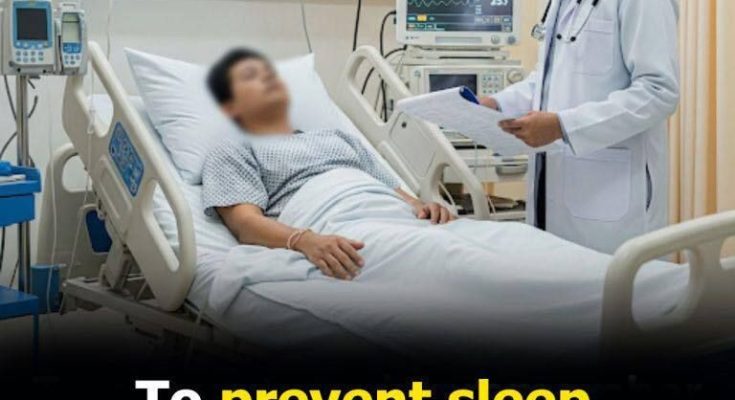A sleep stroke, also known as a “wake-up stroke,” is a medical emergency that happens when blood flow to the brain is blocked or when a blood vessel ruptures while a person is asleep. Unlike daytime strokes, the signs are usually not noticed until the individual wakes up in the morning. This delay in recognition can make treatment far more difficult and often increases the severity of the outcome. Because stroke therapy is most effective in the first few hours, waking up already affected by symptoms means that valuable time has often been lost.
Why They’re So Dangerous
The most effective treatments for stroke, including clot-busting medications or advanced procedures, are highly time-sensitive. Doctors often refer to the first few hours as the “golden window.” During this period, the chances of preventing long-term brain damage are highest. With a sleep stroke, however, this window may already be closed by the time the patient realizes something is wrong. As a result, sleep strokes are often more disabling, and in some cases, fatal. They account for nearly one in five ischemic strokes, underscoring how widespread and serious this problem is.
Warning Signs to Know
Despite the challenges, recognizing symptoms quickly is still essential. Common warning signs include sudden weakness, numbness, or paralysis on one side of the body, often affecting the face, arm, or leg. Slurred or difficult speech, sudden confusion, vision changes such as blurred or double vision, dizziness, loss of balance, and severe headaches are also classic red flags. In some cases, nausea, vomiting, or even seizures may occur. Because symptoms can vary in intensity, any sudden change in how the body feels or functions should never be ignored.
The FAST Rule
Doctors recommend the simple acronym FAST to help people remember how to spot a stroke quickly. F stands for face drooping, when one side of the face suddenly appears uneven or numb. A is for arm weakness, when one arm drifts downward or feels heavy. S is for speech difficulty, when words are slurred or hard to understand. And T is for time to call emergency services right away. Even if symptoms seem to improve after a few minutes, emergency care is crucial. Acting fast can make the difference between recovery and permanent disability.
Prevention Starts at Night
Lowering the risk of a sleep stroke begins long before bedtime. Certain habits can increase stroke risk during sleep, including heavy late-night meals, high salt intake, smoking, and drinking alcohol close to bedtime. These factors can raise blood pressure and strain blood vessels, making a nighttime stroke more likely. Creating a calming routine and giving the body time to settle can reduce these risks significantly.
Reduce Stress Before Sleep
Stress plays a larger role than many people realize. High stress levels can elevate blood pressure and interfere with heart and brain health. Using phones, computers, or televisions right before bed can overstimulate the mind and make it harder to relax. Instead, try practices such as light stretching, meditation, gentle breathing, or reading a book. These calming routines not only improve sleep quality but also support cardiovascular health in the long run.
Build a Healthy Routine
Experts advise aiming for seven to nine hours of restorative sleep each night. Staying lightly hydrated, taking prescribed medications on schedule, and managing conditions like high blood pressure or diabetes all contribute to reducing stroke risk. For individuals with sleep apnea, consistent use of CPAP therapy is critical, since untreated apnea can significantly increase the chances of a stroke.
Final Thought
A short evening walk, followed by mindful relaxation, may seem like a small habit, but it can be powerful in stroke prevention. By practicing healthy bedtime routines, reducing stress, and maintaining good sleep hygiene, you can greatly lower the hidden risks that nighttime may bring. Awareness and prevention are your strongest defenses against the dangers of sleep stroke.



